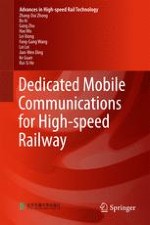2018 | OriginalPaper | Buchkapitel
4. Cooperation and Cognition for Railway Communications
verfasst von : Zhang-Dui Zhong, Bo Ai, Gang Zhu, Hao Wu, Lei Xiong, Fang-Gang Wang, Lei Lei, Jian-Wen Ding, Ke Guan, Rui-Si He
Erschienen in: Dedicated Mobile Communications for High-speed Railway
Verlag: Springer Berlin Heidelberg
Aktivieren Sie unsere intelligente Suche, um passende Fachinhalte oder Patente zu finden.
Wählen Sie Textabschnitte aus um mit Künstlicher Intelligenz passenden Patente zu finden. powered by
Markieren Sie Textabschnitte, um KI-gestützt weitere passende Inhalte zu finden. powered by
